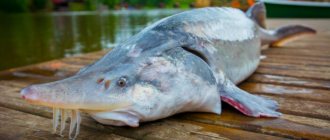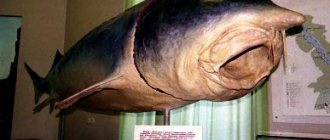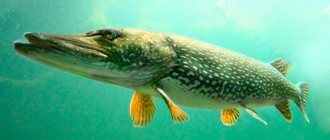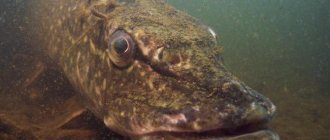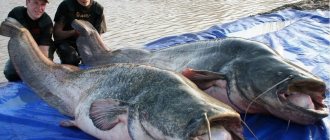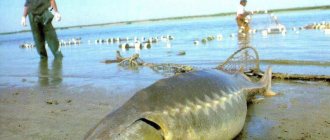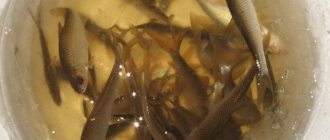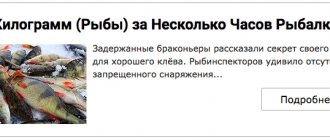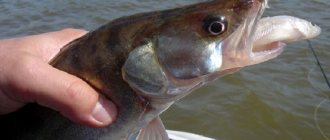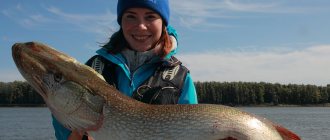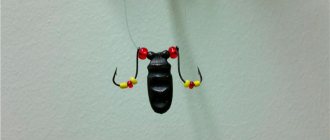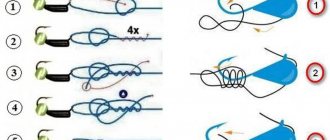What does science think about this?
It turns out that for science the presence of consciousness in animals, at least higher ones, is one of the most difficult and controversial issues. Why? Firstly, because we cannot ask the cats or horses themselves what they really think, feel, understand, how they make choices. And are all these actions inherent in them in principle? In human understanding, of course.
Secondly, to conduct a scientific search, you need to know exactly what to look for. If we are looking for consciousness, then there is no clear, generally accepted answer to the question of what human consciousness is. In other words, you need to find a black cat in a dark room. If we go not from behavior, but, for example, from a certain physiological similarity between humans and other mammals, especially from the similarity in the structure of the brain and nervous system, then this is also an unsteady path, since it is not known exactly, even in the example of a person, how exactly mental and neurophysiological processes.
Where and what kind of fish can you catch in Samara
Experienced fishermen note the fact that the Volga is very rich in a variety of fish: no matter where you go to catch it, you will be guaranteed a rich catch. Most of the fish are observed in the backwaters of the Volga, Samarka, on the peninsulas (Kopylovo, Morkvasha), even within the city (along the Volga coast), etc. The following fish can be found in Samara (if you try hard enough).
Perch. It is rightfully considered one of the most popular fish among fishing enthusiasts, since it is most often caught by fishermen casting a spinning rod in the Volga reservoirs of Samara. This striped “humpback” or “sailor” (depending on size) is known for its gluttony and abundance. In the first couple of years of its life, the perch feeds mainly on plankton, but over time it begins to show its “inclinations” of a predator: even its own fry can get into its toothed mouth. Most often, perch can be found in stagnant parts of the river with underwater rocks, snags, etc. You can, in principle, catch it “hunting” during the day, but the largest specimens prefer to go to the shallows in the early morning. Perch almost always swallows the hook sharply and deeply. It prefers worms as bait.
In the mirror it's me
Nevertheless, the question of the presence of certain forms of consciousness in animals is so interesting and important for understanding the nature of living things that science simply cannot give up trying to figure out at least something. To do this, in order not to delve into problems of a general philosophical nature, this question is divided into several components. It can be assumed that the possession of consciousness involves, in particular, not just receiving sensory information from the senses, but also storing them in memory, and then comparing them with momentary reality.
Comparing experience with reality allows you to make choices. This is how human consciousness works, and we can try to find out whether it works in a similar way in animals. The other part of the issue is self-awareness. Does the animal recognize itself as a separate being, does it understand what it looks like from the outside, does it “think” about its place among other creatures and objects?
One of the approaches to clarifying the issue of self-awareness was outlined by the American biopsychologist Gordon Gallup. They were offered the so-called mirror test. Its essence lies in the fact that a certain mark is applied to the animal’s body (for example, during sleep), which can only be seen in the mirror. Next, the animal is presented with a mirror and its behavior is observed. If, after looking at its reflection, it becomes interested in a foreign mark and, for example, tries to throw it off, then the animal understands that a) it sees itself and b) imagines its “correct” appearance.
Similar studies have been carried out for several decades, and during this time amazing results have been obtained. Gorillas and chimpanzees recognized themselves in the mirror, which is probably not so surprising. Positive results were obtained for dolphins and elephants, which is already more interesting, especially in the case of the latter. But, as it turned out, birds belonging to the corvid family, especially magpies, detect the mark on themselves. In birds, as is known, the brain lacks a neocortex, a new cortex responsible for higher nervous functions. It turns out that for some kind of self-awareness these very highest nervous functions are not required.
Sport fishing for beluga. Giant beluga.
Beluga
is a freshwater predatory “monster”. In the nineteenth century, according to unverified data, a huge specimen of this fish species was caught, weighing more than two thousand kilograms and nine meters long. This is the largest fish on the entire planet Earth, living in fresh water. In the last century, there are indeed officially registered cases of catching giants reaching a weight of one and a half tons and a length of five hundred centimeters, and the museums of Astrakhan and Tatarstan have ton specimens of stuffed fish of these fish, reaching more than four meters in length. As soon as the sun warms up the river water in April-May, belugas from the seas rush to enter the rivers to reproduce their own kind; from September to October, belugas will enter the rivers to spawn before winter. The history of past centuries tells about the industrial fishing of beluga in Russia alone, amounting to tens of thousands of tons of fish caught per year. But the widespread industrialization of the economies of states, namely the construction of dams for hydroelectric power stations in the spawning grounds of beluga, led to a catastrophic decrease in the population of this fish. Today Beluga as an endangered species is protected by law and is a fish listed in the Red Book of Russia and the IUCN.
Giant size sturgeon
Beluga itself is a specimen of fish from the sturgeon family of gigantic size. Its main food is fish - roach, gobies, herring. Beluga fish is found mainly in warm seas such as the Caspian, Adriatic, Black, Azov and White seas. At approximately twenty-three years of age, the female beluga can already go to spawn and move to the nearest freshwater rivers. The life expectancy of this fish on average reaches fifty to sixty years; sometimes the fish lives up to a hundred years. An adult specimen grows up to four and a half meters in length and weighs about a ton.
Uncontrolled fishing of beluga has now led to a sharp decline in its population. Today it is caught mainly for the purpose of artificial breeding. Beluga fishing is classified as entertainment, as well as for scientific purposes and artificial propagation of this species.
Sport fishing for beluga
mainly produced in the spring, from April to the month of May, with a license for sport fishing in a special place in the Caspian Sea. Having agreed with specialists in the beluga fishery on a fishing date, armed with powerful fishing gear and specially equipped for fishing, boats and motorboats go out to sea three or five kilometers from the shore to the feeding grounds of this giant fish. As a rule, it is not possible to determine the fishing location in the sea by eye, so the beluga fishing specialists accompanying the fishermen use a large pole to examine the surface of the bottom, find shell rock, drop anchors and the beluga fishing begins.
Ass is not a fool
The common opinion about parrots is that birds, obeying instinct, only mindlessly imitate the sounds they hear. However, this opinion has long been questioned. American zoopsychologist Irene Pepperberg made her contribution to correcting the reputation of parrots. For thirty years, she conducted experiments with an African gray parrot, Alex, purchased from a regular pet store.
According to scientific work published by Dr. Pepperberg in the late 90s, the bird could not only distinguish and identify colors and objects, but also demonstrated logical thinking skills. Alex had a vocabulary of 150 units, and also uttered entire phrases, and did it quite meaningfully, that is, he named objects, answered questions “yes” or no.” In addition, the parrot had mathematical calculation skills and even, according to the learned lady, mastered the concept of “zero.” The concepts of “more”, “less”, “same”, “different”, “above” and “under” were available to the bird.
Appearance
The appearance of the beluga reminds of its similarity with sturgeon species of fish. Distinctive features include:
- Quite a big mouth.
- Not a large, blunt nose.
- The first spike, located on the back, is small in size.
- Between the gills there is a membrane that connects them.
Beluga is distinguished by a wide, heavy, rounded body, which is painted in an ash-gray hue. The belly is off-white in color, with sometimes a yellowish tint. On the massive body there is a large head. The whiskers located at the bottom of the snout resemble leaf-shaped appendages as they are joined together.
Beluga sometimes interbreeds with its relatives, such as sterlet, thorn, and Russian sturgeon. The result is hybrids that have some differences in appearance related to the structure of the body, gills or coloring. Despite this, hybrids are no different in their behavior from their relatives.
Beluga is a fish that is distinguished by its peculiar behavior among representatives of its species. There are two forms that differ in the period of spawning migrations and the duration of stay in fresh water. At sea, the beluga prefers to lead a solitary lifestyle, and while in the river, it gathers in numerous flocks. This is due to the fact that it comes to rivers to spawn, and in the sea it only feeds and develops.
Few nerve cells
What about memory and comparison of previous experience with reality? It turns out that this ability is by no means only the prerogative of humans or higher mammals. A group of scientists from the universities of Toulouse and Canberra conducted a famous experiment with insects - honey bees. The bees needed to find a way out of the maze, at the end of which a treat awaited them - sugar syrup. The labyrinth contained many Y-shaped forks, where the “correct” turn was marked with a spot of a certain color.
Having trained to fly through a familiar labyrinth and find the desired path, the bees miraculously remembered that, for example, the color blue means turning right. When the insects were launched into another, unfamiliar labyrinth, it turned out that they orient themselves there perfectly, “retrieving” from memory the relationship between color and direction.
Not only do bees have no neocortex, their nerve center consists of a very dense clump of interconnected neurons, a million of them, compared to the hundred billion neurons in the human brain, and human memory is associated with complex thought processes. Thus, evolution shows that it is capable of implementing such a complex function as decision-making based on the comparison of reality with an abstract symbol, on a very modest neural substrate.
Game fish
Let's look at what fish are found in the Volga, taking into account their commercial importance. First of all, these are gold and silver crucian carp. Some representatives of these species grow in the Volga to a length of 50 cm and weigh about 3 kg. Crucian carp is unpretentious to living conditions. Therefore, you can find it in a wide variety of river areas.
An extremely common fish on the Volga is bream. Some individuals are capable of growing here to a weight of 2-3 kg. Small bream, weighing up to 500 g, are called bream by local fishermen, because such fish are more similar to silver bream than to their larger counterparts. Bream is an extremely valuable commercial fish. In the Volga it is caught in large quantities. Smoked and dried bream is especially good. Canned food from this fish is produced on an industrial scale.
Another valuable commercial fish is carp. This representative of cyprinids is widely distributed in the southern waters of the river. On the Volga, carp can reach a length of up to 1 m and a weight of 30 kg. The meat of this fish is much tastier when caught in natural conditions, compared to the meat of individuals raised in artificial reservoirs. On an industrial scale, all kinds of canned food are made from carp, as well as from bream.
I remember what I remember
Experiments with bees, despite all the amazing results, are unlikely to convince anyone that consciousness is inherent in insects. Important signs of the presence of consciousness in a person include the so-called meta-consciousness, that is, consciousness of consciousness. A person not only remembers something, but he remembers that he remembers, not just thinks, but thinks that he thinks. Experiments to identify meta-consciousness or meta-memory have also occurred in the recent past. Initially, such experiments were carried out on pigeons, but they did not bring convincing results.
Then, using a similar methodology, American researcher Robert Hampton decided to test rhesus monkeys and published the results of his work in 2001.
The essence of the experiment was as follows. First, the monkeys were given a simple exercise. The experimental animal had the opportunity, by clicking on the image of a certain characteristic figure on the touch screen, to receive a treat. Then the task became more difficult. The macaques were given a choice of clicking two shapes on a screen. One figure meant “start test.” After pressing, four figures appeared on the screen, one of which was already familiar to the animal from the previous stage of the experiment. If the macaque remembered exactly what the figure was, she could click on it and again get a tasty treat. Another choice is to abandon the test and click the adjacent shape. In this case, you could also get a treat, but not as tasty.
If only a few tens of seconds passed after the first stage of the experiment, both macaques boldly chose the test, found the desired figure and enjoyed the food. After more time (two to four minutes), one of the macaques ceased to be interested in the dough at all and was content with less tasty food.
Another took the test, but found the right figure with difficulty, making many mistakes. To test whether some factor other than memory itself was influencing macaque decision-making, Hampton conducted a test experiment. Of the figures proposed for the test, the correct one was completely removed. Under these conditions, one macaque, having tried the new test, did not choose it again, the other still tried it, but the number of refusals increased.
The results of the experiments showed that rhesus monkeys have metamemory, albeit in a very imperfect form. By choosing a test shortly after the first experience, they remembered that they had remembered the correct figure. After more time, one monkey simply resigned himself to the fact that he had forgotten the desired drawing, the other “thought” that he would still remember, but made mistakes. The exclusion of a once memorized figure from the test caused a loss of interest in it. Thus, the presence of mental mechanisms has been established in monkeys, which were previously considered only a sign of developed human consciousness. Moreover, from metaconsciousness, metamemory, as you might guess, there is a close path to the feeling of being a subject of thinking, that is, to the feeling of “I”.
The largest freshwater fish is beluga: weight, height, age
The largest fish were caught in the Volga, Azov, and Black Seas. Beluga was much larger. It is now noted that in the Volga region individuals weighing approximately 70-90 kg are caught, in the Azov Sea region 50-60 kg. These are the most commonly found fish. After 1990, individuals weighing more than 1000 kg were not caught in Russia. Recently, this is a huge rarity due to the fact that the population of this individual has decreased significantly.
Beluga is an anadromous fish that spawns mainly in rivers. It is worth noting that caviar is very sticky and settles to the bottom. In this case, the first fry appear in mid-June. Until about the age of six, most of them slide back into the seas and continue their lives there. It is worth noting that the female beluga does not die after spawning, but can spawn several times in her life. Life expectancy is up to 100 years. This sturgeon is a predator, so in the seas it feeds on herring, gobies, and mollusks. The remains of seal pups were also found in the fish’s stomach.
Regarding age, this is another one of the longest-living river inhabitants. Therefore, almost every fisherman who has caught a large specimen can assume that it is no less old than him, and even older. Now the species is on the verge of extinction, its number is gradually decreasing. Recently, the fishing of this fish has been banned due to the fact that it is listed in the Red Book.
Beluga
Rat empathy
In searches for elements of consciousness in the animal world, they often point to the neurophysiological commonality of humans and other creatures. One example is the presence of so-called mirror neurons in the brain. These neurons fire both when performing a certain action and when observing another creature perform the same action. Mirror neurons are present not only in humans and primates, but also in more primitive creatures, including birds.
These brain cells are not fully understood and have been attributed many different functions, such as a significant role in learning. Mirror neurons are also believed to serve as the basis for empathy, that is, the feeling of empathizing with the emotional state of another being without losing understanding of the external origin of this experience.
And recent experiments have shown that empathy can be inherent not only in humans or primates, but even... in rats. In 2011, an experiment was conducted at the University of Chicago Medical Center with two experimental animals. The rats were inside the box, but one of them moved freely, and the other was placed in a tube, which, of course, did not allow the animal to move freely. Observations showed that when the “free” rat was left alone in the box, it showed much less activity than when the “sufferer” was next to it.
It was obvious that the cramped state of her fellow tribesman did not leave the rat indifferent. Moreover, compassion moved the animal to action. After several days of “suffering,” the free rat learned to open the latch and free the other rat from captivity. True, at first the opening of the valve was preceded by some time of reflection, but at the end of the experiments, as soon as it got into the box with the rat sitting in the tube, the “free” rat immediately rushed to the rescue.
Amazing facts associated with the discovery of elements of consciousness in a wide variety of living beings not only have value for science, but also raise questions of bioethics.
Where and what kind of fish can be caught in the Tver region
In the reservoirs of the Tver region, as in Samara, there is more than enough fish. Roach and perch are quite common here; catfish, pike, bream, etc. are sometimes found. Since some of the presented fish species have already been described earlier, let’s consider those that have not yet been mentioned.
Roach . She is also a red-eye, a carnivore, a soroga or a sorozhatnik (the latter name is especially common among experienced fishermen). Those who grew up on the Volga know about roach like no one else, because it is on it that children learn to fish. By the way, quite large roaches live on the Volga - about 0.5 kg. Roach swims at shallow depths, in clean water. Most often lives in flocks. Roach is a rather voracious, widespread, but very capricious fish. The easiest way to catch it is in shallow water with a jig (like crucian carp).
Catfish _ This powerful, maneuverable fish is a tasty morsel for anglers. It is difficult not to recognize this fish due to the mustaches invariably present on the mouth of the fish. Most often, catfish can be found close to the bottom, often in mud pits. A fishing rod for catching catfish should be strong enough and long (no more than 3 m). Mice, worms (several at once), and caterpillars are excellent baits. Bird giblets will be a delicacy for catfish.
Bream. One of the most revered fish in fishing. Fishing enthusiasts often come to the Volga from the most remote corners of the country. Bream is a very valuable and nutritious fish, which is why it is often caught on an industrial scale. It should be borne in mind that bream is a very shy fish, so you should not take it rashly. It is worth catching it from the shore, using a regular fishing rod. You can use maggots, flies, peas and even potatoes as bait.
Today you learned about the main types of fish that live in the Tver and Samara regions on the Volga River. Happy fishing!
Brothers in consciousness
In 2012, three famous American neuroscientists - David Edelman, Philip Lowe and Christoph Koch - released a declaration following a special scientific conference at the University of Cambridge. The declaration, which became known as the Cambridge Declaration, received a title that can be loosely translated into Russian as “Consciousness in Human and non-Human Animals.”
This document summarized all the latest research in the field of neurophysiology of humans and other living beings. One of the central points of the declaration was the statement that the neural substrate of emotions and experiences is not located exclusively in the neocortex.
The example of birds that do not have a neocortex shows that parallel evolution is capable of developing elements of a complex psyche on a different basis, and the nervous processes associated with emotions and cognition show much greater similarity in birds and mammals than previously thought. The declaration also mentioned the results of “mirror experiments” with birds, and stated that even the neurophysiological nature of sleep in birds and mammals can be considered similar.
The Cambridge Declaration was perceived in the world as a manifesto, as a call to reconsider man's attitude towards living beings, including those that we eat or use for laboratory experiments. This is, of course, not about giving up meat or biological experiments, but rather about treating animals with regard to their more complex mental organization than previously thought. On the other hand, all the data referred to by the authors of the declaration does not make the question about the nature of human consciousness any clearer.
Feeling its uniqueness, we discover that some of its elements are scattered in the living world and we have no monopoly on them. Attributing “human” qualities to our pets, we, of course, often wishful thinking, but still in this case it is better to be a little mistaken than to hurt the feelings of “lesser brothers” with cruelty.
The largest beluga caught in the Volga
In 1922, a female weighing 1,200 tons was caught in the Volga region. The weight of the caviar was about 150 kg. A little later, in 1924, also in the Volga, a female weighing about 1000 kg was caught. It contained 246 kg of caviar. The oldest fish caught was beluga, which was 65-70 years old. After 1928, such large specimens were no longer caught.
Great catch
